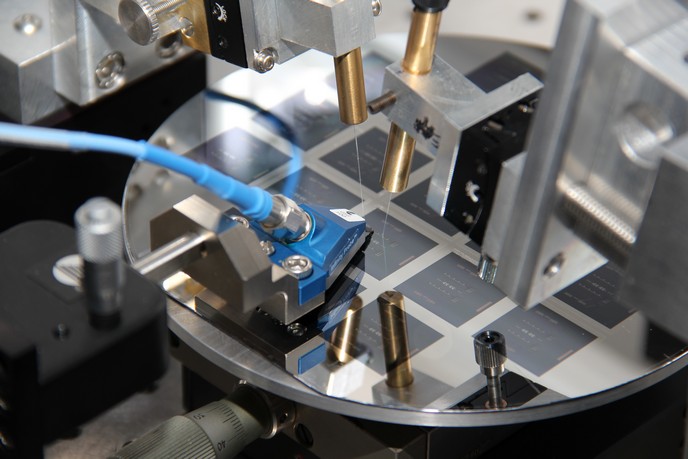(2D materials may enable electric vehicles to get 500 miles on a single charge)
2019/1/10 アメリカ合衆国イリノイ大学シカゴ校(UIC)

・ UIC が、2D 遷移金属ジカルコゲニド(TMDCs)を使用してリチウム空気蓄電池の触媒を開発。
・ 現在、実験段階にあるリチウム空気蓄電池は、エネルギー貯蔵容量がリチウムイオン蓄電池の 10 倍でより軽量。2DTMDCs による高度な触媒との組み合わせにより、リチウム空気蓄電池の効率性の向上が可能となる。
・ リチウムイオン蓄電池を使用する EV では、現在、一充電走行距離が約 100 マイル(約 161km)。 2DTMDCs 触媒を導入したリチウム空気蓄電池を使用すれば、約 400~500 マイルへの増加が見込め、エネルギー貯蔵技術におけるブレイクスルーの可能性が期待できる。
・ 2DTMDCs は、充放電中の蓄電池内で起こる化学反応等、他の物質との反応に有用な高導電性と高電子移動度を有する特殊な化合物。リチウム空気蓄電池を模倣した電気化学的システムにおいて 15 種類の TMDCs の触媒としての性能を調べた結果、白金等の従来の触媒材料に比して反応速度が大幅に向上したことを確認。
・ TMDCs は、蓄電池での電気化学的反応に関わるより優れた電気特性と広い反応表面積を有しながらその構造も安定しており、充放電の両反応を高速化する二機能性を提供する。
・ 同材料はまた、充放電時にイオンが往来するイオン液体電解質との相乗効果も提示。TMDCs と電解質が共触媒システムとして働き、電子移動の高速化を促進してより速い充電、より効率的なエネルギー貯蔵とエネルギーの放出を可能にする。
・ このような新材料は、蓄電池技術開発を次のレベルへと押し上げる新たな道筋となるもの。TMDCs 触媒のより効率的で大規模な調整方法と製造方法の開発が今後の課題。本研究は米国立科学財団 (NSF)が一部支援した。
URL: https://today.uic.edu/2d-materials-may-enable-electric-vehicles-to-get-500-miles-on-a-si ngle-charge
(関連情報)
Advanced Materials 掲載論文(アブストラクトのみ:全文は有料)
New Class of Electrocatalysts Based on 2D Transition Metal Dichalcogenides in Ionic Liquid
URL: https://onlinelibrary.wiley.com/doi/abs/10.1002/adma.201804453
<NEDO海外技術情報より>
Abstract
The optimization of traditional electrocatalysts has reached a point where progress is impeded by fundamental physical factors including inherent scaling relations among thermokinetic characteristics of different elementary reaction steps, non‐Nernstian behavior, and electronic structure of the catalyst. This indicates that the currently utilized classes of electrocatalysts may not be adequate for future needs. This study reports on synthesis and characterization of a new class of materials based on 2D transition metal dichalcogenides including sulfides, selenides, and tellurides of group V and VI transition metals that exhibit excellent catalytic performance for both oxygen reduction and evolution reactions in an aprotic medium with Li salts. The reaction rates are much higher for these materials than previously reported catalysts for these reactions. The reasons for the high activity are found to be the metal edges with adiabatic electron transfer capability and a cocatalyst effect involving an ionic‐liquid electrolyte. These new materials are expected to have high activity for other core electrocatalytic reactions and open the way for advances in energy storage and catalysis.



